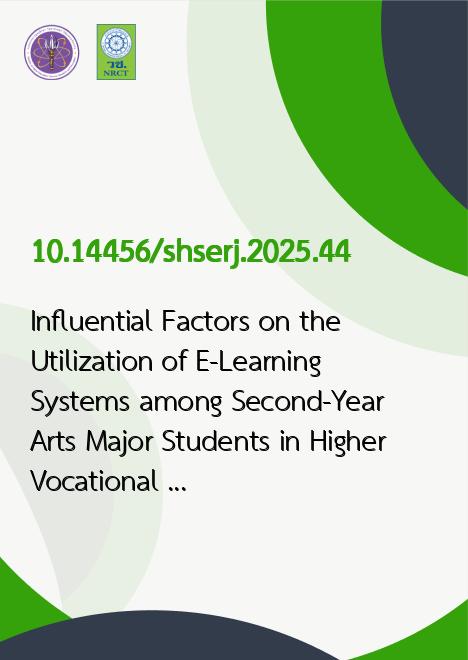
|
Influential Factors on the Utilization of E-Learning Systems among Second-Year Arts Major Students in Higher Vocational Colleges in Henan, China |
|---|---|
| รหัสดีโอไอ | |
| Creator | Qingguo Zhang |
| Title | Influential Factors on the Utilization of E-Learning Systems among Second-Year Arts Major Students in Higher Vocational Colleges in Henan, China |
| Publisher | Assumption University Press |
| Publication Year | 2568 |
| Journal Title | The Scholar: Human Sciences |
| Journal Vol. | 17 |
| Journal No. | 2 |
| Page no. | 145-157 |
| Keyword | Subjective Norm, Effort Expectancy, Perceived Usefulness, Behavioral Intention, Use Behavior |
| URL Website | https://assumptionjournal.au.edu/index.php/Scholar/article/view/7971 |
| Website title | https://assumptionjournal.au.edu/index.php/Scholar |
| ISSN | 2586-9388 |
| Abstract | Purpose: The objective of this study is to explore the factors impacting the use behavior of e-learning systems among second year of art majors in higher vocational colleges in Henan, China. The research framework introduces subjective norm, effort expectancy, internet experience, e-learning motivation, perceived usefulness, behavioral intention, and use behavior. Research design, data, and methodology: The researcher employed a quantitative research method and distributed questionnaires to 500 sophomore students in arts majors at a public higher vocational college in Henan province. The initial content validity and reliability assessment was carried out using Item Objective Consistency and Cronbach's Alpha. After the data was collected, Confirmatory Factor Analysis (CFA) and Structural Equation Modeling (SEM) were employed to analyze the data, validate the model fit, and confirm the causal relationships between variables, testing the hypotheses for their reliability and validity. Results: The results of the study suggest that the use behavior in the e-learning system among second-year students majoring in arts at vocational colleges is significantly impacted by subjective norm, effort expectancy, internet experience, e-learning motivation, perceived usefulness, and behavioral intention. Conclusions: It is recommended to designing and promoting e-learning systems to enhance successful adoption and effective utilization. |
